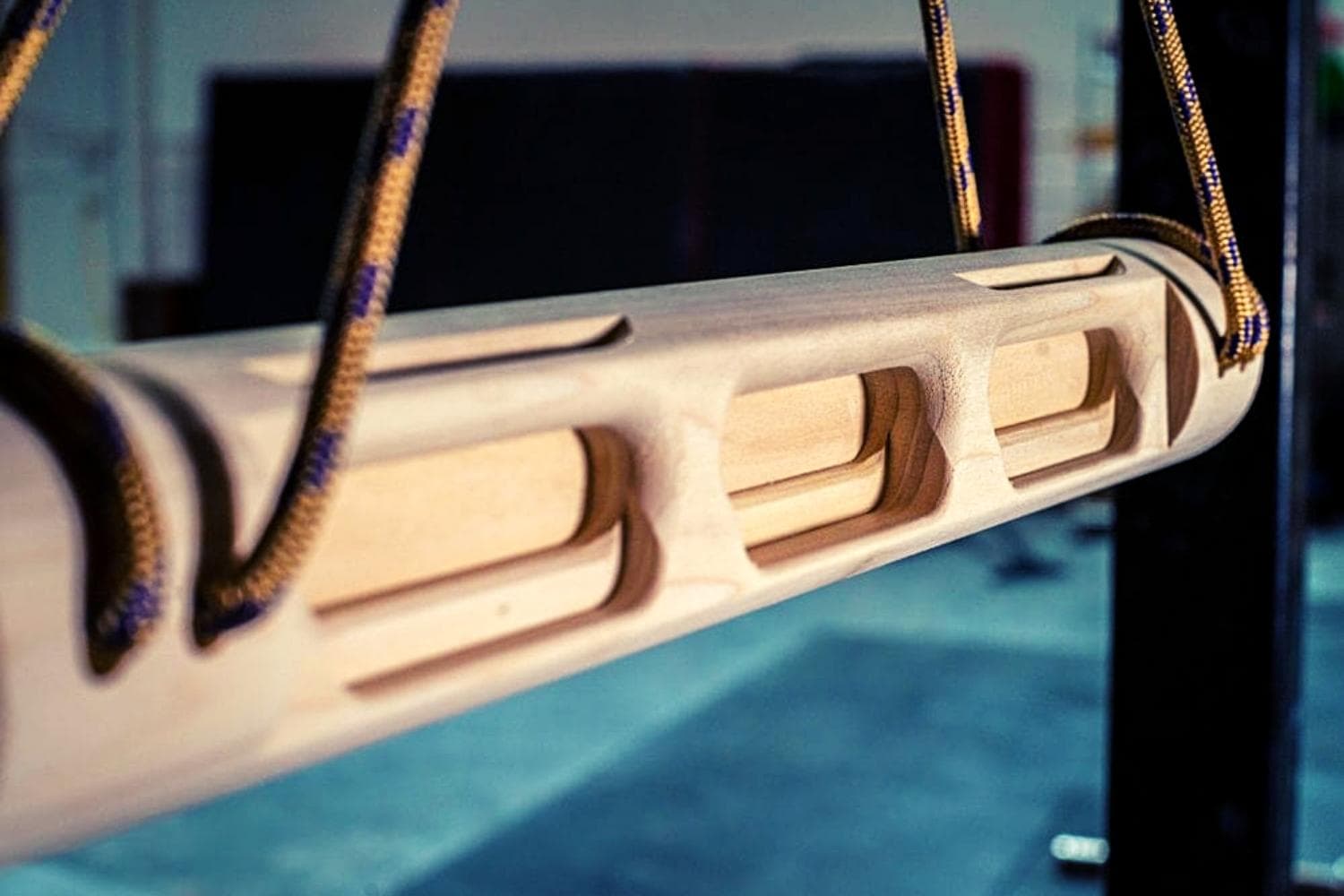
The 5 Best Portable Hangboards to Train at the Crag (2024 Guide)
Published on: 05/10/2022
Rock climbing in winter offers some key advantages. Friction improves with less perspiration from the fingers and less moisture on the rock.
But it’s also cold. Climbers mitigate this problem with mittens, hats, jackets, etc.
And this does keep your core warm and your muscles limber. But it’s hard to warm up the fingers before a session effectively. This can result in strained or injured tendons.
Unlike regular climbing hangboards, portable hangboards help you warm up at a crag. Most feature a variety of edge sizes, finger pockets, and grips that mimic common hand positions and movements used in rock climbing.
These are also the perfect tool for at-home training or to get your blood flowing before the real thing at the gym. We’ve made a list of five of the best portable hang boards on the market today.
Our Method

First, we shortlisted all the widely available portable hang board models. Then, we checked customer ratings of those models from the major online retailers.
This gives us a good idea of what works for most people. And we only consider opinions from customers who’ve made a verified purchase of the item.
But sources like Reddit and climbing-specific forums also offer insight into quality, durability, etc. Thankfully, the climbing community is quick to complain if a product falls short of its expectations.
The final component of our research is less formal – we’ve asked ask climbers we know what they’ve used and what works for them. The result is a list that (hopefully) has something for everyone.
Note: Hangboarding is not suitable for anyone who’s still developing or has been climbing for under two years. We discuss this in further detail later and link to an article discussing the matter specifically. In short – finger training should only commence when the rest of your body is climbing fit.
Our Selection of the Best Portable Hangboards for 2024
Comparison Table
Material: Wood
Holds: 40mm rounded jug, 20mm Lattice Edge, 25mm positive edge, 95 mm pinch, and hard sloper.
Material: wood
Hold sizes: 15, 20, and 38 mm
Material: Wood
Holds: Small crimps, 8mm, 10mm, 15mm, and 20mm
Metolius Rock Rings 3D Training Tool
Material: Polyester resin
Holds: 4-finger-width pocket, 4-finger flat edge, and 3-finger pocket
Metolius Light Rail Training Board
Material: Wood
Holds: 38mm, 18mm, 13mm + jug grip
1. Lattice Crimp and Pinch Block: Best Portable Hangboard for Crimp Strength
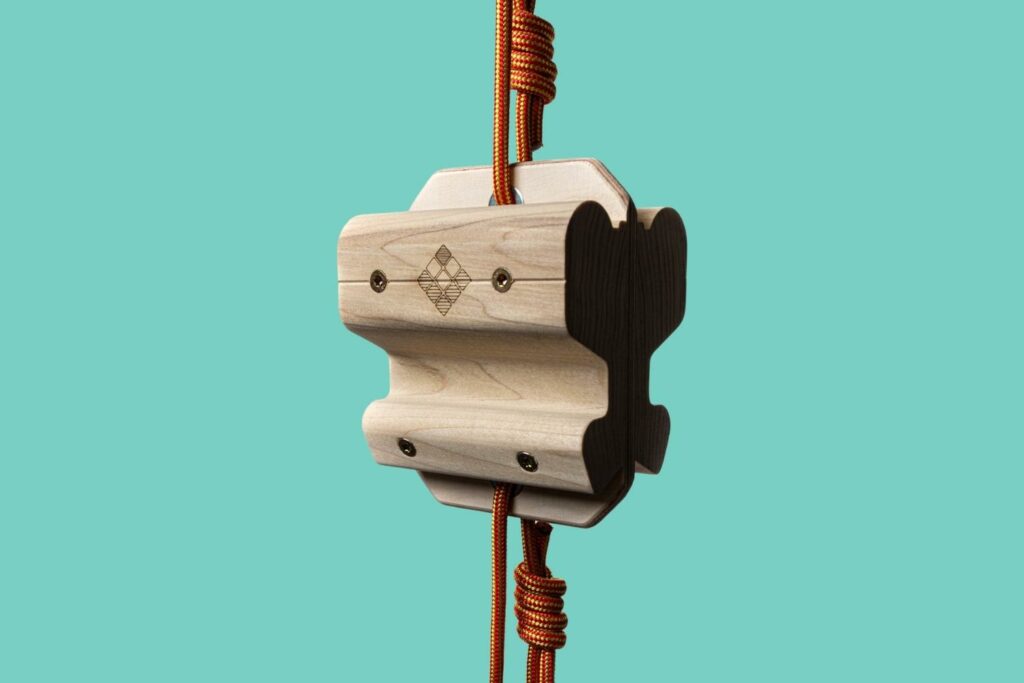
This compact block from Lattice is a little different from some of the other models on our list. While those focus primarily on finger strength, this also builds pinch strength – an essential component of your climbing-specific training.
Grips included in this small package are a large 40mm rounded jug, 20mm Lattice Edge, 25mm positive edge, 95mm pinch, and hard sloper. That’s a lot of training positions in a small block. Two attachment points allow connection to a fixed point or free weights.
We guess you could loop it around a foot and create tension that way. But we haven’t seen that in any of the advertising.
The sloper works particularly well with a free weight attached. It’s an effective way to practice a difficult grip without worrying about strain or injury. An alternate subheading for this could be Best Portable Hangboard for Weight Training.
The unit is in wood. And despite our best efforts, we couldn’t establish exactly what kind of wood. It is, however, a softwood that will potentially dent if dropped.
Lattice also offers a similar model in anodized aluminum. But the metal finish is not as comfortable or effective at warming up the fingers, in our opinion.
Pros
Cons
Who is it for?
This will work for anyone looking to improve pinch and finger strength. But this block is particularly suited to those rehabilitating an injury. Its one-arm design and compatibility with free weights make it ideal for low-weight, high repetition movements that are a part of most physio programs.
But it’ll certainly work for anyone as a warm-up board. And it’s small enough to fit in your bag.
2. Metolius Rock Rings Training Tool: Best Portable Hangboard for Climbers on a Budget
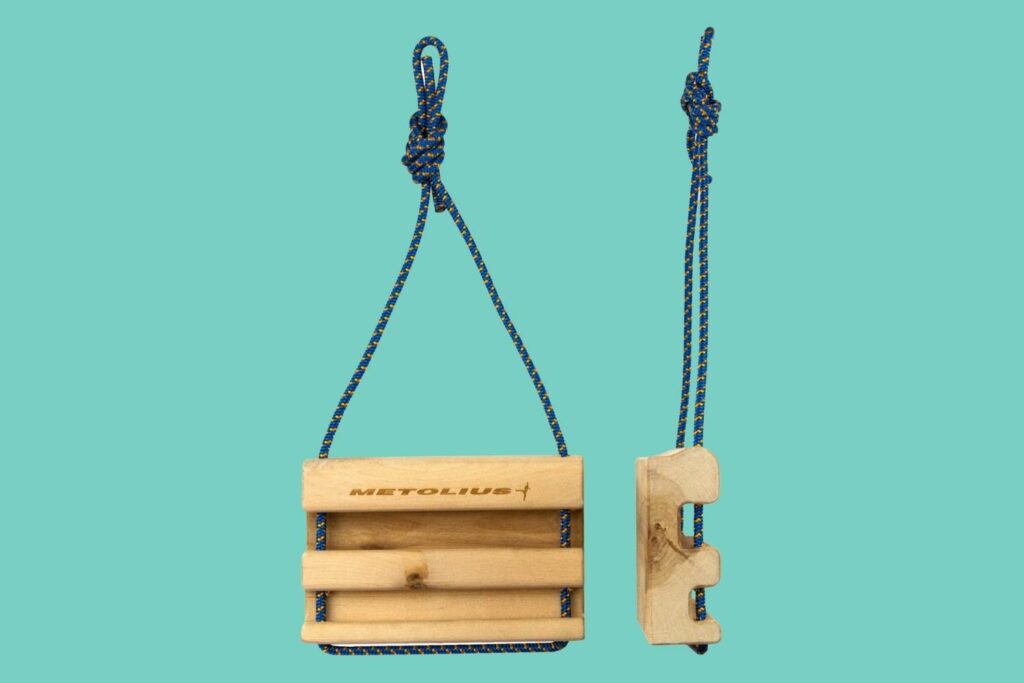
These recycled wooden training tools from Metolius feature a smoother finish than their resin counterparts. Like that other model, these are lightweight and portable. And their 38mm, 20mm, and 15mm ledges do an excellent job of training your crimping strength.
The fact that each wrist can rotate independently helps prevent injury but may make these difficult for beginners. Dead hangs are possible, but they’re certainly not easy.
These can be attached to a pull-up bar, bolt, anchor, hook, or anything that’ll hold your weight. Looping them around the foot to create pressure is also possible.
They could also be attached to free weights for weighted pull-ups. The build quality of the Metolius Rock Rings is as good as you’d expect for the brand.
Pros
Cons
Who is it for?
These are an excellent option for someone with limited space. They’re also aesthetically pleasing and won’t look out of place in any room. These are sleek, reasonably small, and offer enough edge types for the more advanced climber.
The two-piece design won’t suit some people. It does protect the wrist, but it also requires a lot of strength and concentration to stop them from rotating.
3. Tension Flash Board: Best Portable Hangboard for Traveling Climbers
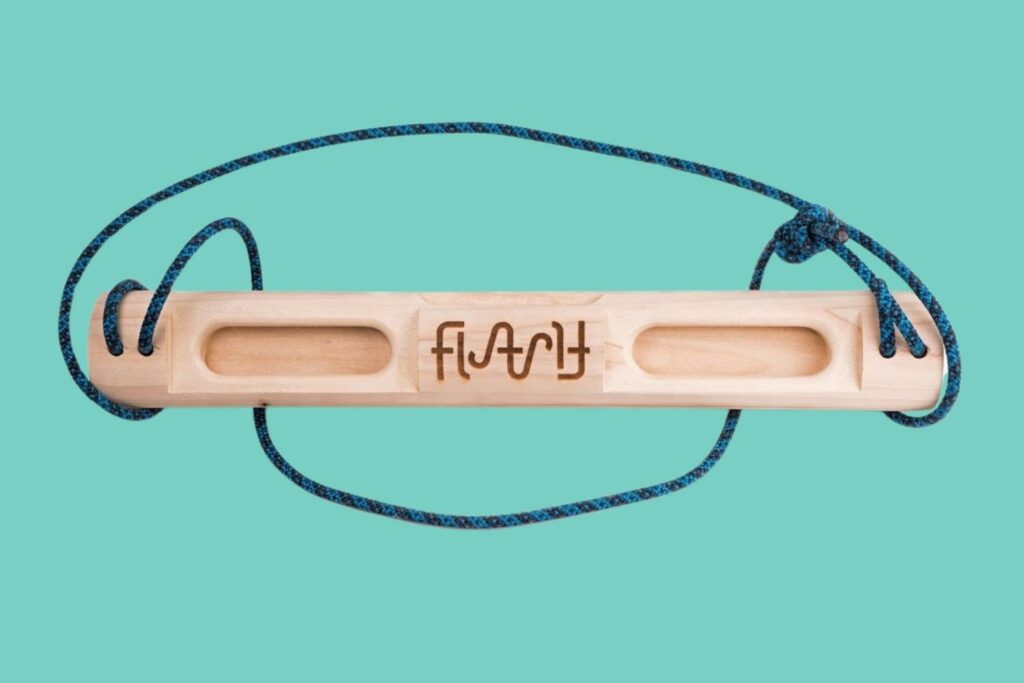
Colorado-based Tension is known for producing high-end climbing gear. This portable flash board can mount to a pull-up bar, sturdy tree branch, bolt, or be pulled against pressure from your foot. But there’s little unwanted rotation due to the way the rope wraps the bar. This helps prevent injury.
This cylindrical bar features 8mm, 10mm, 15mm, and 20mm crimps. These grips target advanced climbers, warming up for hard routes/boulder problems. Many climbers start their session with this on the ground, pulling on their feet.
Due to its small edges, this board offers a serious challenge if immediately suspended. Many climbers get sufficiently warmed up by pulling the bar against pressure from the foot.
Overall, this is an excellent solution for the traveling climber. It’s light, can fit in your checked baggage, and has crimps to challenge even advanced climbers. It’s more expensive, but Tension offers a discount on cosmetically imperfect units.
The build quality remains the same. This is a durable, fairly versatile flash board that should last you many seasons.
Pros
Cons
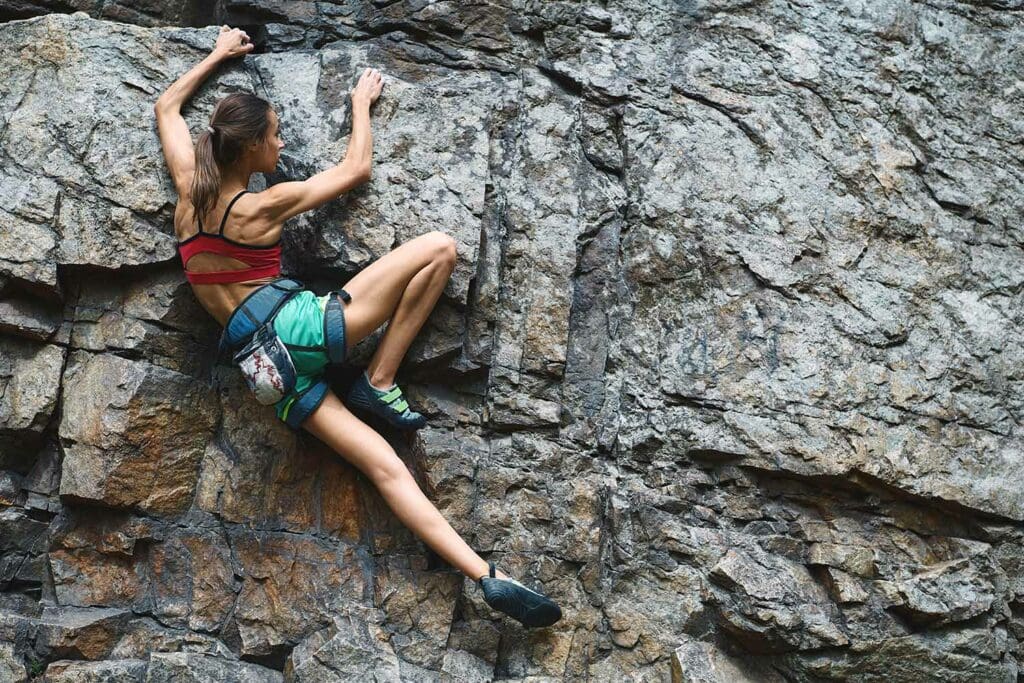
Who is it for?
With its small pockets and shallow crimps, this is not for novices (no hangboards are!). Its portable design, low weight, and integrated carry strap make it a good fit for a talented dirtbag with some extra cash.
But any advanced climber would be happy to own one of these for training on the go or warming up at the crag. Tension’s gear is always well-thought-out and built to a high standard. This board is no exception.
4. Metolius Rock Rings 3D Training Tool: Best for Finger Pockets
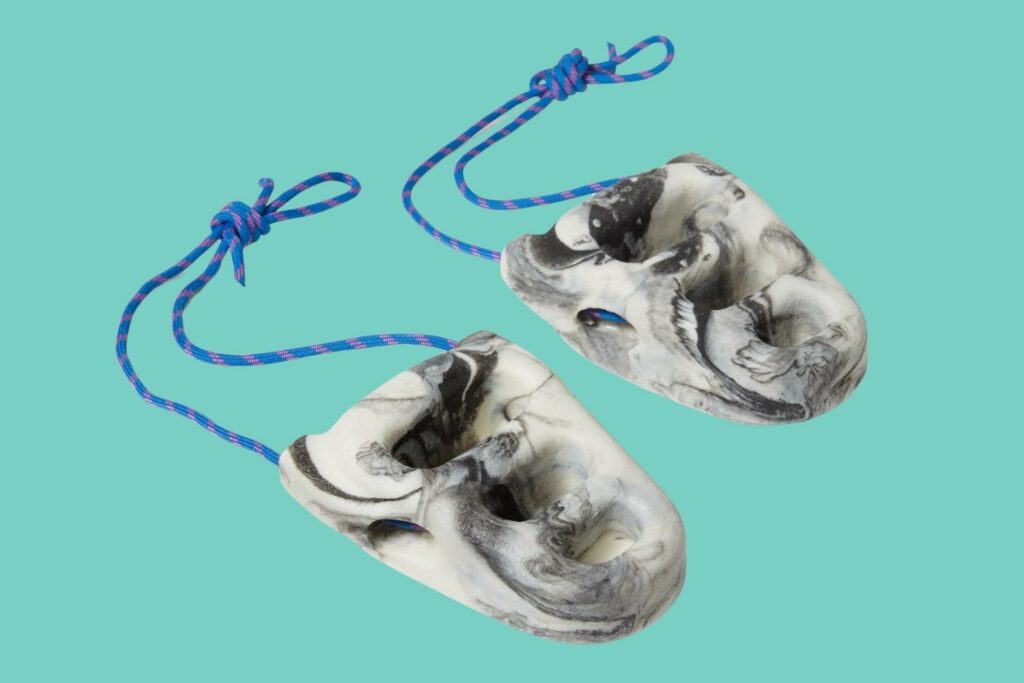
Like the wooden version, the polyester resin Metolius Rock Rings each mount from a single point. This allows the wrist and arm to rotate freely. The result is a focus on finger strength with a lower potential for injury. The climbing holds here are different from the wooden version, however.
The 3D Training Tool features a large jug at the top, a deep 4-finger-width pocket, a 4-finger flat edge, and a 3-finger pocket at the bottom. For specifically targeting finger pockets, these are an excellent set.
The polyester resin finish here has a slightly textured feel. This can help with grip for the sweaty-handed but can also be abrasive for those with softer hands. We found it comfortable and grippy for short-term use.
They’re just as portable as their wooden counterparts and easy to mount to a pull-up bar. The resin construction here is probably a bit more durable than wood but also not as kind to the hands.
However, like the wooden Rock Rings, the free rotation will make them a challenge for those starting. The jug grip and deeper finger pockets make these slightly more accessible than the wooden Rock Rings.
Pros
Cons

Who is it for?
Both versions of the rock rings are good portable hangboards. But a large part of what makes a good portable hangboard is its size and weight. While the resin rock rings aren’t massive or especially heavy, they won’t be as easy to pack into a bag as others on our list.
But, if you want to practice on a jug and some finger pockets, these are a great option. Experienced climbers will find plenty to challenge them. But the deep finger pockets and large jug grip should work for those just starting on finger training too.
The Metolius Rock Rings 3D are slightly less suitable for travel than the wood ones. But they make an excellent set to leave hung up in the garage or on the porch.
5. Metolius Light Rail Training Board: Best Portable Hangboard For Warming Up at the Crag
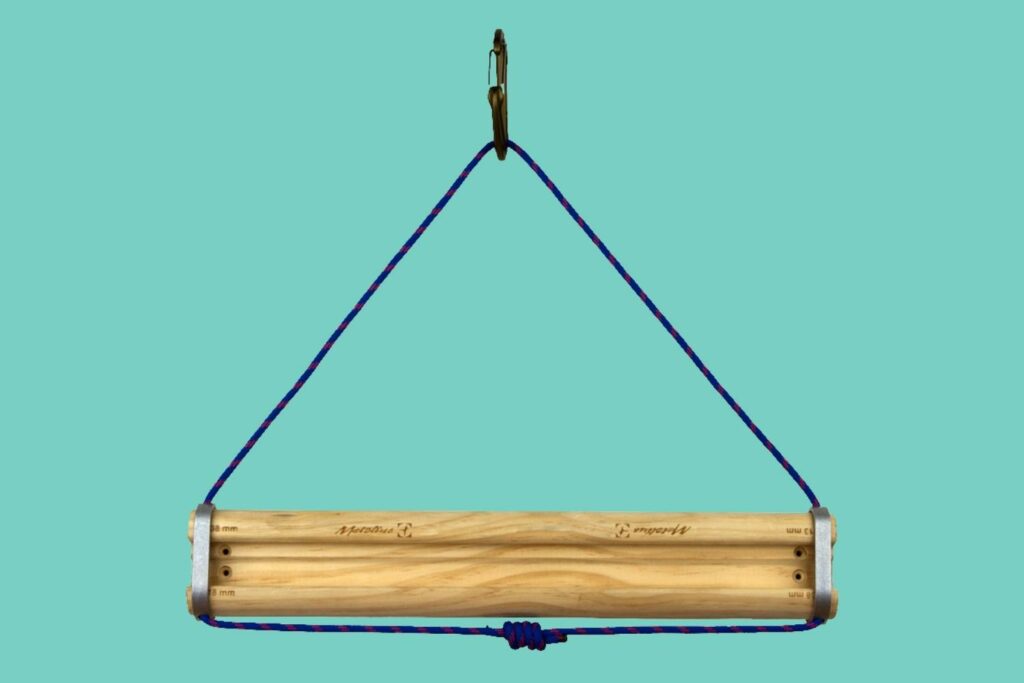
One thing that’s different right off the mark is the mounting options here. This can be hung from a pull-up bar, bolt, or tree branch but also permanently mounted on a wall via the included screws. This makes it both a portable hangboard and a static one.
The light rail is reversible, creating three edge sizes and edge types in a single package. Included are a 38mm, 18mm, 13mm, and a jug grip. This is a great range for such an inexpensive, lightweight portable hangboard.
While pull-ups, lock-offs, and other exercises are all possible, this is rated for bodyweight only. That means no weighted pull-ups.
Overall, this is a super versatile tool that looks attractive and won’t break the bank. It offers enough edge sizes to be useful for training at home and warming up at the climbing gym or crag. For its size and weight, this thing does quite a bit.
Pros
Cons
Who is it for?
The size and weight of this make it attractive for taking to the crag. But it’s also drilled for mounting and ships with four screws. These two factors make it a good option for just about anyone looking for an inexpensive hangboard training device.
Experienced climbers will get the most from this (like all hang board sets). But the wrists don’t rotate independently, making it a little more stable for doing pull-ups. The jug grip at the top is useful for training pinch strength too.
How to Find the Best Portable Hangboard

What’s a Hang Board, and what’s it for?
A hang board is a training device experienced climbers use to increase contact strength, pinch strength, and grip. Many climbers mount a hang board/fingerboard/flash board (same thing – different names) above a doorway or in their garage.
The device mimics the pressure placed on the hands and fingers during rock climbing. It’s a great way to build up climbing-specific muscles and tendons.
Climbing training is only one use of a flash board, however. They are also a great way to warm up the fingers before climbing, thus reducing the risk of injury.
Rock climbers frequently suffer tendon injuries in their fingers. Using a portable hangboard before climbing can mitigate the risk by getting the blood flowing.
Portable hangboards are designed for this latter use. And because they’re made to be taken to the crag with you, the best ones are compact, lightweight, and easy to install.
Regular Hang Board vs. Portable One
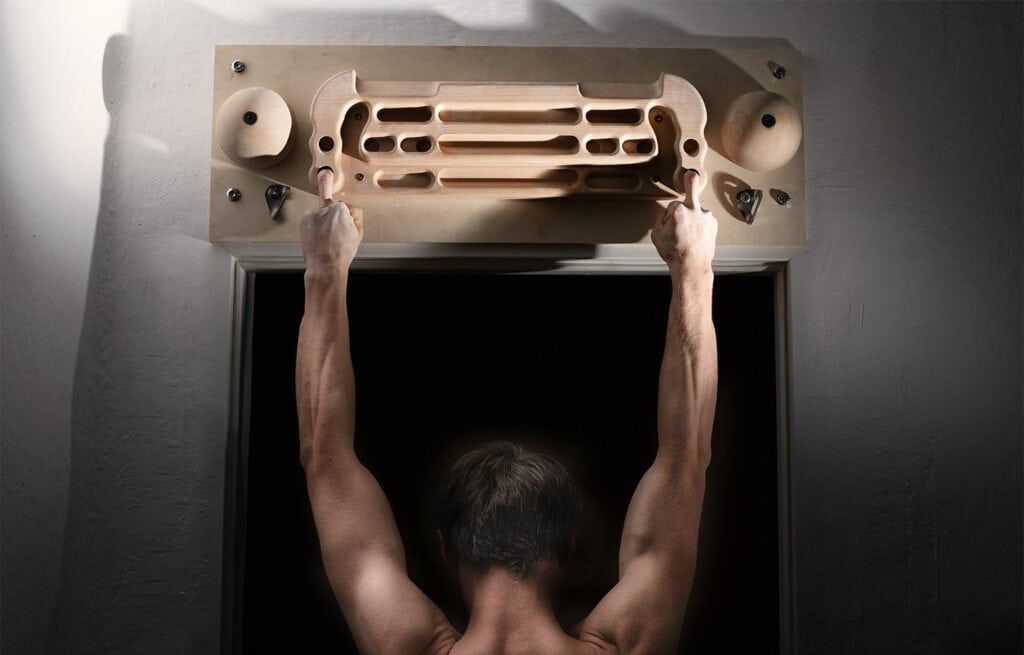
A regular hangboard is bolted/screwed to a wall, beam, rafter, or doorframe. These are often large units with many edge sizes and different grips.
Examples like the Rock Prodigy from Trango include a great range of grips that are based on the training regime of Mark and Mike Anderson.
These regular boards take up more space and can afford to offer a much wider variety of grips. Being mounted to a solid wall also makes a difference. A portable hangboard will rotate and twist to some extent. This doesn’t happen with a static one.
But a portable hangboard can help us maintain condition when away from the gym. They’re also useful for warming up before serious sessions, helping to get the blood circulating.
Something like the Metolius Light Rail is small and light enough to fit in a backpack while still offering several edge sizes.
Some of the portable hangboards on our list are two-piece designs. This can help with weight/storage and mitigate injury by allowing the wrists to rotate freely.
But this independent movement of each arm makes it more difficult than the rail-style boards. A rail-style unit is probably closer to mimicking how our fingers work while rock climbing.
Important Criteria to Consider
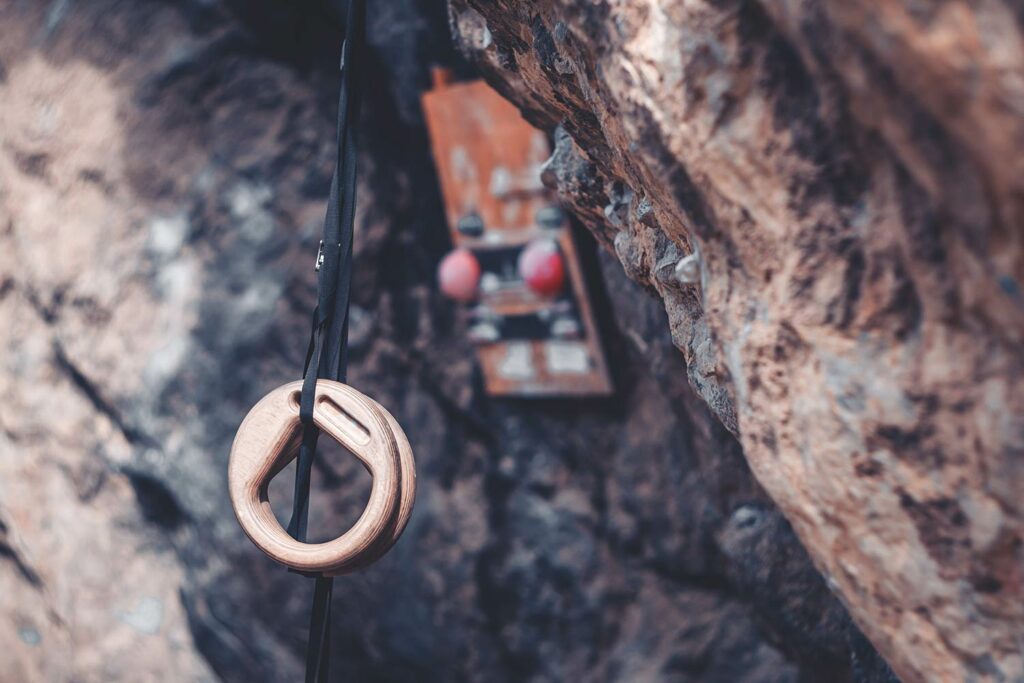
This kind of training is for those under 16 or anyone who’s been climbing for less than two years. Their fingers are not ready.
In most real-world climbing situations, our weight is distributed across our hands and feet. This means our fingers only bear a fraction of the weight they do on a hangboard.
Hangboard training places all of the stress on your finger tendons. If you aren’t sufficiently developed when you start using one, you risk injury.
Note: This is especially true when trying difficult, one-arm maneuvers.
Two-part hangboards like the Metolius Rock Rings allow your wrists to rotate freely. This can be good from the perspective of injury prevention but makes it difficult. Single-piece solutions like the Metolius Light Rail or the Tension Flash Board offer a more stable platform but more challenging edges.
If space is at a premium, a portable hangboard allows you to pack it away when not in use. That said, some regular, static hangboards are compact enough to fit above a regular, domestic doorway.
Tips
Beginner climbers are best off avoiding portable hangboards for a couple of years. This is necessary to allow the finger muscles and tendons to build up slowly. Don’t rush it – finger injuries are a nightmare.
Suppose you’re new to climbing training and want to maintain some condition when away from the gym, just hang out. Find a regular pull-up bar. On this, you can do dead hangs, pull-ups, and leg raise, without as much risk to your fingers.

Mount your portable hangboards where you can release your fingers and simply unweight onto the ground. Releasing your fingers and then dropping from a height puts undue strain on your fingers.
Read the manual that comes with your board, check some Youtube tutorials, and ask more experienced climbers for tips. Doing exercises in the correct form is critical.
When dead hanging, keep your shoulder blades open. Maintain muscular tension over your shoulders and upper torso and engage your rotator cuffs.
Start on the jugs or larger holds before moving on to the smaller ones. Even when doing a warm-up routine, always start with the easest hold. Some rail-type boards allow you to wrap your hand around the entire unit to make a larger grip.
Get confident at hanging before trying anything more advanced. Yes, you’ll see advanced climbers doing weight hangs, pull-ups, lock-offs, etc. But they’ve paid their dues by hanging like a curing pheasant for a long time.
Any time you try a new exercise, listen carefully to your body. Lactic acid takes a while to build up, and many of us don’t notice we’re hurt at the point of injury. If you are following a training regime and can’t finish a set, it’s probably time to complete the session.
FAQs
The most basic exercises are dead hangs. These involve suspending your weight from your fingertips and hanging. The pockets and edges on portable hangboards allow you to do this exercise while holding climbing-style grips.
Weighted hangs involve attaching a free wait to a belt to increase the load on the fingers. Obviously, this places more stress than just the body weight and someone just starting out shouldn’t attempt it.
Many of the portable hangboards on our list can also be attached to weights and lifted. This can be a great way to build up strength slowly or to build back up after an injury. Looping the rope around your foot and using it as a brace to pull against is possible.
This last method is possible just about anywhere. Units like the Tension Flash Board or Metolius Light Rail are particularly good for this technique.
This comes down to personal preference, to some extent. However, if you have particularly sweaty fingers, the rougher texture on the resin/plastic might offer a better grip.
If you’re going to buy several portable hangboards, having a variety of grips and surfaces would be of benefit.
Portable wooden boards tend to be lighter and less bulky, making them more suited to travel. They also tend to look nicer, If your partner is fussy about you hanging ugly-looking stuff around the house – go for a classy wooden design.
The board is mostly a warm-up tool. But it’s still worth getting your heart rate up and blood flowing first. Burpees, jump rope, jacks, stationary bike, or whatever your poison is – anything to get you going.
After that, it’s worth doing some regular pull-ups. dips, and push-ups to engage the rotator cuffs and warm up the specific muscles. Finally, do your usual stretching routine, paying attention to the scapular stabilizers and rotator cuffs.
Not For Everyone!
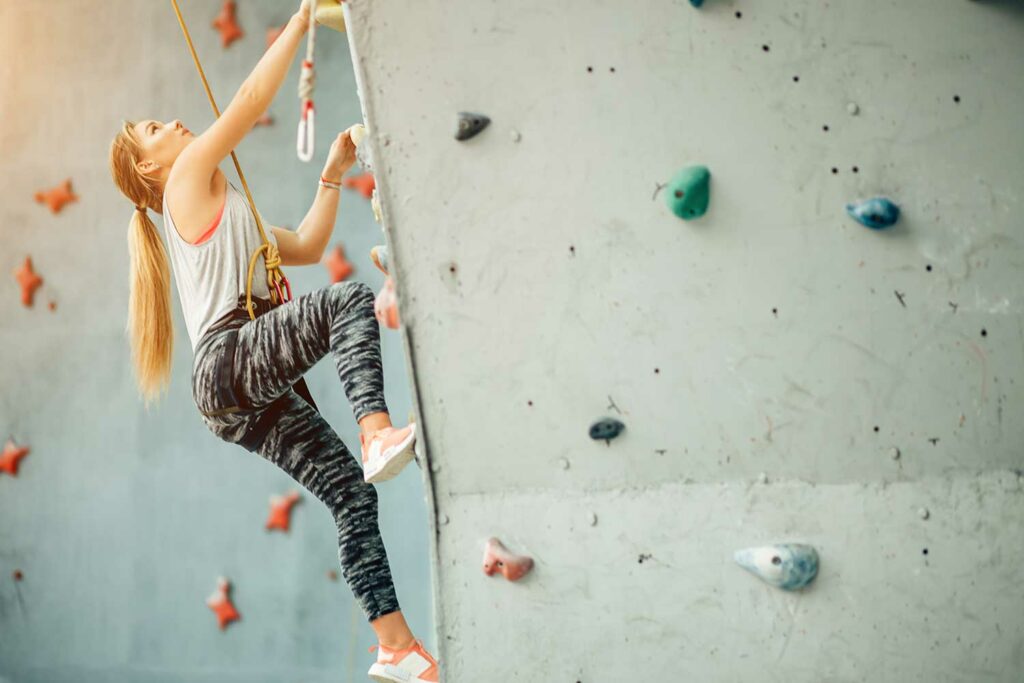
Finger training before you’re fully developed (ie. under 16/18) can lead to a tendon injury. The same is true of novice climbers attempting to use a hang board.
Finger strength needs to be built slowly (while climbing with your whole body) and injuries to finger tendons can keep you out of action for a long time.
Don’t engage in this kind of climbing training until you’re ready. And read whatever training manual comes with your device.
When we use the word novice in this article, we refer to someone beginning a hangboard routine – not someone who’s just started climbing.
For more on the dangers of using a board before you’re ready, check this link.





